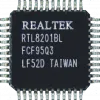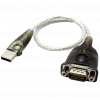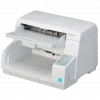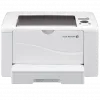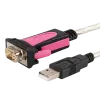Windows Server 2003 (sometimes referred to as Win2K3) is a server operating system produced by Microsoft, introduced on 24 April 2003. An updated version, Windows Server 2003 R2, was released to manufacturing on 6 December 2005. Its successor, Windows Server 2008, was released on 4 February 2008.
According to Microsoft, Windows Server 2003 is more scalable and delivers better performance than its predecessor, Windows 2000.
Windows Server 2003 comes in a number of editions, each targeted towards a particular size and type of business. In general, all variants of Windows Server 2003 have the ability to share files and printers, act as an application server, and host message queues, provide email services, authenticate users, act as an X.509 certificate server, provide LDAP directory services, serve streaming media, and to perform other server-oriented functions.
Windows Small Business Server
Main article: Windows Small Business Server
SBS includes Windows Server and additional technologies aimed at providing a small business with a complete technology solution. The technologies are integrated to enable small business with targeted solutions such as the Remote Web Workplace, and offer management benefits such as integrated setup, enhanced monitoring, a unified management console, and remote access.
The Standard Edition of SBS includes Windows SharePoint Services for collaboration, Microsoft Exchange server for e-mail, Fax Server, and Active Directory for user management. The product also provides a basic firewall, DHCP server and NAT router using either two network cards or one network card in addition to a hardware router.
The Premium Edition of SBS includes the features fo the Standard edition plus Microsoft SQL Server 2000 and Microsoft Internet Security and Acceleration Server 2004.
SBS has its own type of Client Access License (CAL) that is different and costs slightly more than CALs for the other editions of Windows Server 2003. However, the SBS CAL encompasses the user CALs for Windows Server, Exchange Server, SQL Server, and ISA Server, and hence is less expensive than buying all other CALs individually.
SBS server has the following design limitations, mainly affecting Active Directory:
- Only one computer in a domain can be running Windows Server 2003 for Small Business Server.
- Windows Server 2003 for Small Business Server must be the root of the Active Directory forest.
- Windows Server 2003 for Small Business Server cannot trust any other domains.
- Windows Server 2003 for Small Business Server is limited to 75 users or devices depending on which type of CAL.
- Windows Server 2003 for Small Business Server is limited to a maximum of 4GB of RAM (Random Access Memory).
- A Windows Server 2003 for Small Business Server domain cannot have any child domains.
- Terminal Services only operates in remote administration mode on the server running SBS 2003, and only two simultaneous RDP sessions are allowed. (Change from SBS 2000 policy)
- To remove the limits from SBS server and upgrade from Small Business Server to regular Windows Server, Exchange Server, SQL and ISA server versions there is a Windows Small Business Server 2003 R2 Transition Pack.
Web Edition
Windows Server 2003, Web Edition is mainly for building and hosting Web applications, Web pages, and XML web services. It is designed to be used primarily as an IIS 6.0 Web server and provides a platform for rapidly developing and deploying XML Web services and applications that use ASP.NET technology, a key part of the .NET Framework. Terminal Services is not included on Web Edition. However, Remote Desktop for Administration is available.. Only 10 concurrent file-sharing connections are allowed at any moment. It is not possible to install Microsoft SQL Server and Microsoft Exchange software in this edition without installing Service Pack 1.
Despite supporting XML Web services and ASP.NET, UDDI cannot be deployed on Windows Server 2003 Web Edition. The .NET Framework version 2.0 is not included with Windows Server 2003, Web Edition, but can be installed as a separate update from Windows Update.
Windows Server 2003 Web Edition supports a maximum of 2 physical processors with support for a maximum of 2GB of RAM. Additionally, Windows Server 2003, Web Edition cannot act as a domain controller. It is the only edition of Windows Server 2003 that does not require Client Access Licenses when used as the internet facing server front end for Internet Information Services and Windows Server Update Services. When using it for storage or as a backend with another remote server as the frontend, CALs may still be required.
Standard Edition
Microsoft Windows Server 2003, Standard Edition is aimed towards small to medium sized businesses.Standard Edition supports file and printer sharing, offers secure Internet connectivity, and allows centralized desktop application deployment. The initial release of Windows Server 2003 was available solely for 32-bit processors; a 64-bit version supporting the x86-64 architecture (AMD64 and EM64T, called collectively x64 by Microsoft) was released in April 2005. The 32-bit version will run on up to 4 processors and up to 4 GB RAM; the 64-bit version is capable of addressing up to 32 GB of RAM and also supports Non-Uniform Memory Access. The 32-bit version is available for verified students to download free of charge as part of Microsoft's DreamSpark program.
Enterprise Edition
Windows Server 2003, Enterprise Edition is aimed towards medium to large businesses. It is a full-function server operating system that supports up to 8 processors and provides enterprise-class features such as eight-node clustering using Microsoft Cluster Server (MSCS) software and support for up to 32 GB of memory through PAE (added with the /PAE boot string). Enterprise Edition also comes in 64-bit versions for the Itanium and x64 architectures. The 64-bit versions of Windows Server 2003, Enterprise Edition are capable of addressing up to 1 TB of memory. Both 32-bit and 64-bit versions support Non-Uniform Memory Access (NUMA). It also provides the ability to hot-add supported hardware. Enterprise Edition is also required to issue custom certificate templates.
Datacenter Edition
Windows Server 2003, Datacenter Edition is designed for infrastructures demanding high security and reliability. Windows Server 2003 is available for x86, Itanium, and x86-64 processors. It supports a maximum of up to 32 processors on 32-bit or 64 processors on 64-bit hardware. 32-bit architecture also limits memory addressability to 64 GB, while the 64-bit versions support up to 1 TB. Windows Server 2003, Datacenter Edition, also allows limiting processor and memory usage on a per-application basis.
Windows Server 2003 Datacenter Edition also supports Non-Uniform Memory Access. If supported by the system, Windows, with help from the system firmware will make use of NUMA kernel awareness, which is indicated by the presence of a firmware generatel ACPI Static Resource Affinity Table (SRAT) that defines the NUMA topology of the system. Windows then uses this table to optimize memory accesses, and provide NUMA awareness to applications, thereby increasing the efficiency of thread scheduling and memory management.
Windows Server 2003, Datacenter Edition has better support for Storage Area Networks (SANs). It features a service which uses Windows sockets to emulate TCP/IP communication over native SAN service providers, thereby allowing a SAN to be accessed over any TCP/IP channel. With this, any application that can communicate over TCP/IP can use a SAN, without any modification to the application.
Windows Server 2003, Datacenter Edition also supports 8-node clustering. Clustering increases availability and fault tolerance of server installations by distributing and replicating the service among many servers. This edition supports clustering with each cluster having its own dedicated storage, or with all cluster nodes connected to a common storage area network (SAN). The SAN can be running on a Windows or non-Windows operating system and may be connected to other computers as well.
Windows Compute Cluster Server
Windows Compute Cluster Server 2003 (CCS), released in June 2006, is designed for high-end applications that require high performance computing clusters. It is designed to be deployed on numerous computers to be clustered together to achieve supercomputing speeds. Each Compute Cluster Server network comprises at least one controlling head node and subordinate processing nodes that carry out most of the work.
Compute Cluster Server uses the Microsoft Messaging Passing Interface v2 (MS-MPI) to communicate between the processing nodes on the cluster network. It ties nodes together with a powerful inter-process communication mechanism which can be complex because of communications between hundreds or even thousands of processors working in parallel.
The application programming interface consists of over 160 functions.[citation needed] A job launcher enables users to execute jobs to be executed in the computing cluster. MS MPI was designed to be compatible with the reference open source MPI2 specification which is widely used in High-performance computing (HPC). With some exceptions because of security considerations, MS MPI covers the complete set of MPI2 functionality as implemented in MPICH2, except for the planned future features of dynamic process spawn and publishing.
Windows Storage Server
Windows Storage Server 2003, a part of the Windows Server 2003 series, is a specialized server operating system for Network Attached Storage (NAS). Launched in 2003 at Storage Decisions in Chicago, it is optimized for use in file and print sharing and also in Storage Area Network (SAN) scenarios. It is only available through Original equipment manufacturers (OEMs). Unlike other Windows Server 2003 editions that provide file and printer sharing functionality, Windows Storage Server 2003 does not require any Client access licenses.
Windows Storage Server 2003 NAS equipment can be headless, which means that they are without any monitors, keyboards or mice, and are administered remotely. Such devices are plugged into any existing IP network and the storage capacity is available to all users. Windows Storage Server 2003 can use RAID arrays to provide data redundancy, fault-tolerance and high performance. Multiple such NAS servers can be clustered to appear as a single device. This allows for very high performance as well as allowing the service to remain up even if one of the servers goes down.
Windows Storage Server 2003 can also be used to create a Storage Area Network, in which the data is transferred in terms of chunks rather than files, thus providing more granularity to the data that can be transferred. This provides higher performance to database and transaction processing applications. Windows Storage Server 2003 also allows NAS devices to be connected to a SAN.
Windows Storage Server 2003 R2, as a follow-up to Windows Storage Server 2003, adds file-server performance optimization, Single Instance Storage (SIS), and index-based search. Single instance storage (SIS) scans storage volumes for duplicate files, and moves the duplicate files to the common SIS store. The file on the volume is replaced with a link to the file. This substitution reduces the amount of storage space required, by as much as 70%.
Windows Storage Server R2 provides an index-based, full-text search based on the indexing engine already built into Windows server. The updated search engine speeds up indexed searches on network shares. Storage Server R2 also provides filters for searching many standard file formats, such as .zip, AutoCAD, XML, MP3, and .pdf, and all Microsoft Office file formats.
Windows Storage Server 2003 R2 includes built in support for Windows SharePoint Services and Microsoft SharePoint Portal Server, and adds a Storage Management snap-in for the Microsoft Management Console. It can be used to manage storage volumes centrally, including DFS shares, on servers running Windows Storage Server R2.
Windows Storage Server 2003 R2 can be used as an iSCSI target with standard and enterprise editions of Windows Storage Server 2003 R2, incorporating WinTarget iSCSI technology which Microsoft acquired in 2006 by from StringBean software. This will be an add-on feature available for purchase through OEM partners as an iSCSI feature pack, or is included in some versions of WSS as configured by OEMs.
Windows Storage Server 2003 can be promoted to function as a domain controller, however this edition is not licensed to run directory services. It can be joined to an existing domain as a member server.
Features
- Distributed File System (DFS): DFS allows multiple network shares to be aggregated as a virtual file system.
- Support for SAN and iSCSI: Computers can connect to a Storage Server over the LAN, and there is no need for a separate fibre channel network. Thus a Storage Area Network can be created over the LAN itself. iSCSI uses the SCSI protocol to transfer data as a block of bytes, rather than as a file. This increases performance of the Storage network in some scenarios, such as using a database server.
- Virtual Disc Service: It allows NAS devices, RAID devices and SAN shares to be exposed and managed as if they were normal hard drives.
- JBOD systems: JBOD (Just a bunch of discs) systems, by using VDS, can manage a group of individual storage devices as a single unit. There is no need for the storage units to be of the same make and model.
- Software and Hardware RAID: Windows Storage Server 2003 has intrinsic support for hardware implementation of RAID. In case hardware support is not available, it can use software enabled RAID. In that case, all processing is done by the OS.
- Multi Path IO (MPIO): It provides an alternate connection to IO devices in case the primary path is down.
Windows Unified Data Storage Server is a version of Windows Storage Server 2003 R2 with iSCSI target support standard, available in only the standard and enterprise editions.
- Microsoft defines a physical CPU/processor as a single socket/node on the systemboard. For O/S licensing purposes, a dual-socket single-core (Intel Pentium/4 Xeon, AMD Athlon/64) system counts as a total of 2 processors, whereas a single-socket quad-core CPU (such as AMD's Opteron and Intel's Xeon) counts as 1 processor. Microsoft's policy has no bearing on how third-party software vendors (such as Oracle) administer CPU licensing for its server applications.
Windows Home Server
Main article: Windows Home Server
Windows Home Server is an operating system from Microsoft based on Windows Small Business Server 2003 SP2 (this can be seen in the directory listings of the install DVD). Announced on 7 January 2007 at the Consumer Electronics Show by Bill Gates, Windows Home Server is intended to be a solution for homes with multiple connected PCs to offer file sharing, automated backups, and remote access.
Windows Home Server began shipment to OEMs on 15 September 2007.
Updates
Service Pack 1
On 30 March 2005, Microsoft released Service Pack 1 for Windows Server 2003. Among the improvements are many of the same updates that were provided to Windows XP users with Service Pack 2. Features that are added with Service Pack 1 include:
- Security Configuration Wizard: A tool that allows administrators to more easily research, and make changes to, security policies.
- Hot Patching: This feature is set to extend Windows Server 2003's ability to take DLL, Driver, and non-kernel patches without a reboot.
- IIS 6.0 Metabase Auditing: Allowing the tracking of metabase edits.
- Windows Firewall: Brings many of the improvements from Windows XP Service Pack 2 to Windows Server 2003; also with the Security Configuration Wizard, it allows administrators to more easily manage the incoming open ports, as it will automatically detect and select default roles.
- Other networking improvements include support for Wireless Provisioning Services, better IPv6 support, and new protections against SYN flood TCP attacks.
- Post-Setup Security Updates: A default mode that is turned on when a Service Pack 1 server is first booted up after installation. It configures the firewall to block all incoming connections, and directs the user to install updates.
- Data Execution Prevention (DEP): Support for the No Execute (NX) bit which helps to prevent buffer overflow exploits that are often the attack vector of Windows Server exploits.
- Windows Media Player version 10
- Internet Explorer 6 SV1 (e.g. 'IE6 SP2')
- Support for fixed disks bearing data organized using the GUID Partition Table system
A full list of updates is available in the Microsoft Knowledge Base.

